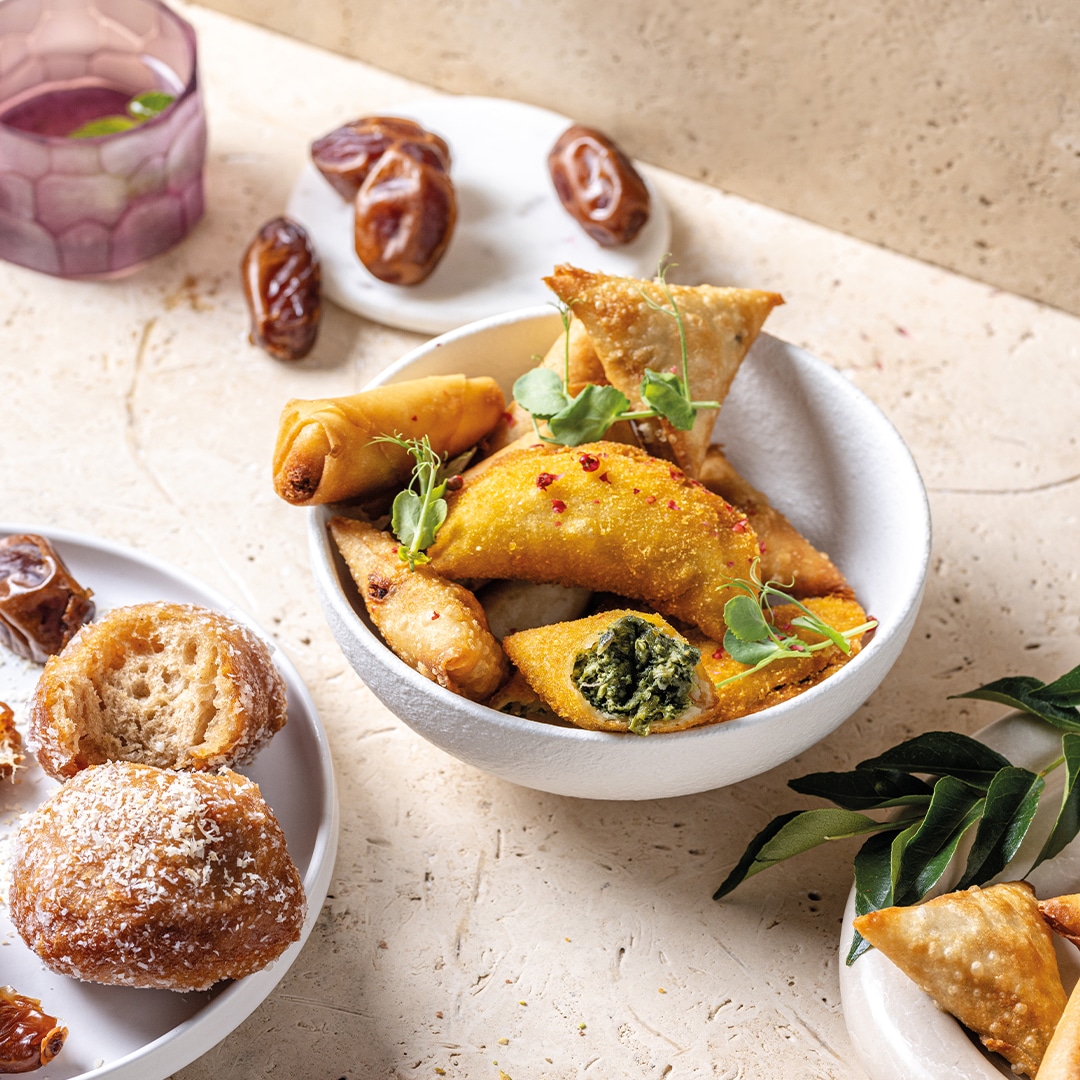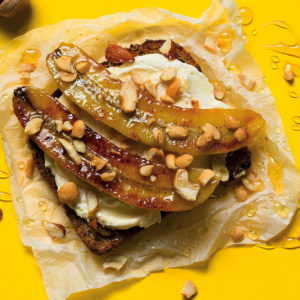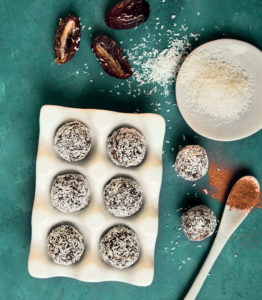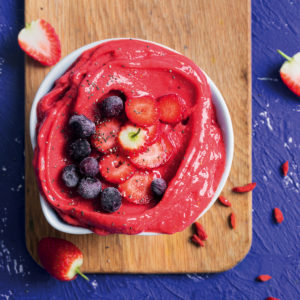As the holy month of Ramadan comes to an end and the celebratory Eid Al Fitr is on the horizon, our editor chats to some of our team members about their stories during this special time.
It’s that time of the year where the flavours and aromas of curry leaves, cumin, coriander and cinnamon are constantly wafting through a number of households. For those who are not familiar with the Muslim religion, Ramadan (the holy month of fasting) is more than simply not eating for a specific amount of hours during the day.
The true essence of the fast is to humble oneself by not consuming any food or drink between sunrise (suhoor) and sunset (iftar), to remind you of those who are less fortunate. It’s a spiritual journey where in the 30-day period, you are removing all the worldly things that you’ve become attached to in the hopes of making space for gratitude and love.
We speak to some of our Muslim team members to learn more about how this practice has shaped their lives.
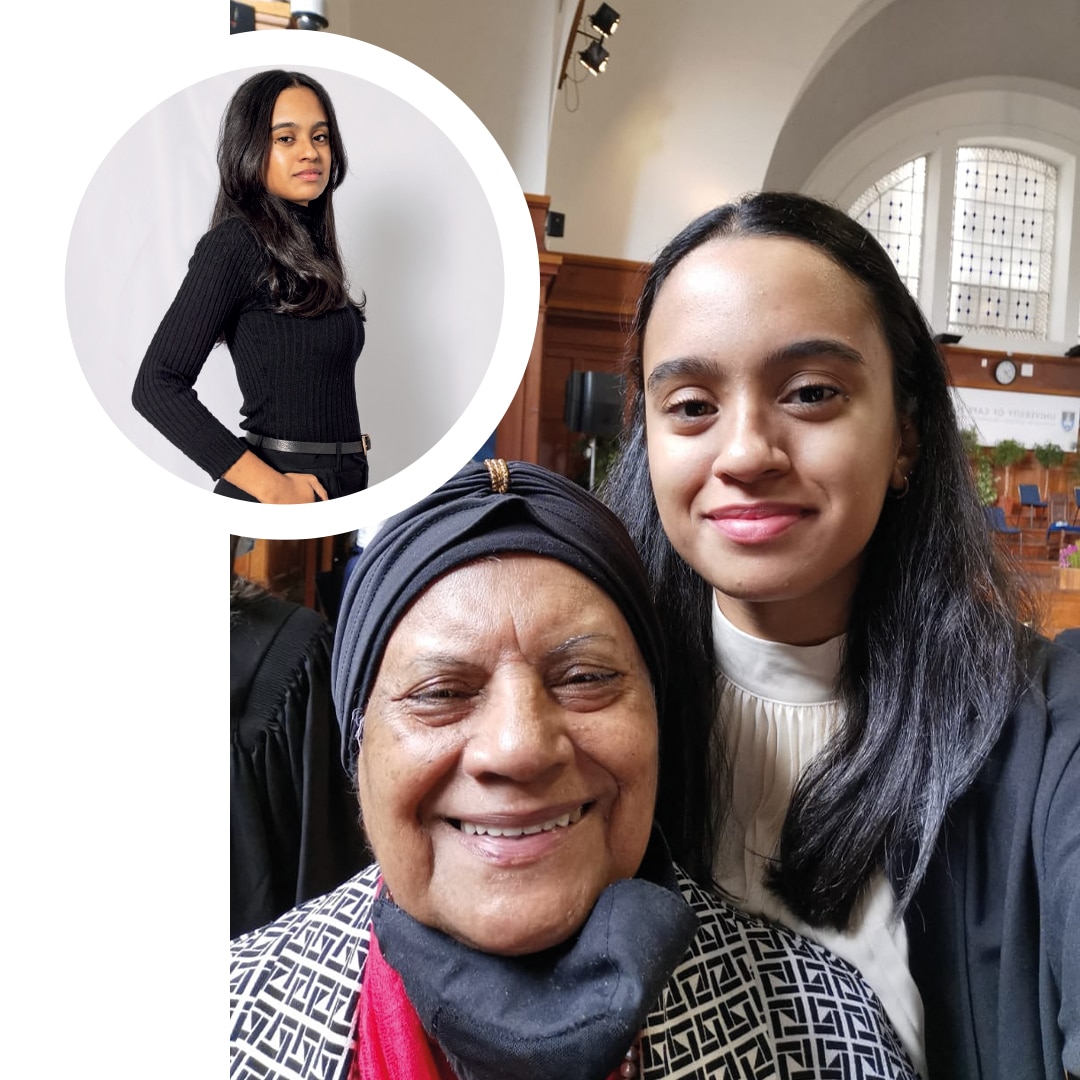
Sahrah Enous
Editorial Intern
Sahrah, who is an only child, recalls her first fast as a young girl at school: “It was almost easier to fast when I was younger, simply because you’ve got a lot more energy and your schedule and time is mapped out due to school,” she says. “There was very little time to think about the possible hunger pangs compared to when you’re much older, like I do today.” For this reason, Sahrah tends to avoid being around people who are eating during Ramadan because it strengthens her resolve.
In the days leading up to Ramadan, Sahrah takes on a “weaning” approach to prepare her body for the lack of indulging that is about to happen. This is preparation she feels is imperative to get her body accustomed to the practice. As one would assume, once you’ve been fasting for long periods of time, your stomach shrinks, which means that you can’t eat as much when the time for Iftar arrives.
With this in mind, Sahrah’s family always opts for an aromatic and hearty soup as a source of nourishment after a long day of not eating. “My favourite is a Malaysian chicken soup, which contains vermicelli, shredded chicken, cumin, tomato, carrots and other aromatics – all tied up in a beautiful fragrant broth. It always hits the spot!” she muses.
When it comes to breaking the fast: “Our household has always favoured savoury food, however these items are quite time-consuming to make, so we love to choose the cheat sheet and order from an Aunty,” says Sahrah. “This way, we also ensure that what we’re eating comes from a trusted source and is as authentic as possible.”
This year, however, will be Sahrah’s first Ramadan without her beloved grandmother, who she was very close to. “My gran was truly the glue in the family. Her cooking style, recipes and traditions were all passed down from generation to generation so they are very dear to our hearts,” she shares. Sahrah feels that although the days during Ramadan are filled with food cravings, the knowledge that seeing it through to the end of each day is more rewarding than giving into temptation, is key. This reward reveals itself not just physically, but emotionally and spiritually too. This is the wisdom that she clings to – a gift from her late gran. “We miss her daily – her presence, love for cooking and her love for us will be sorely missed.”
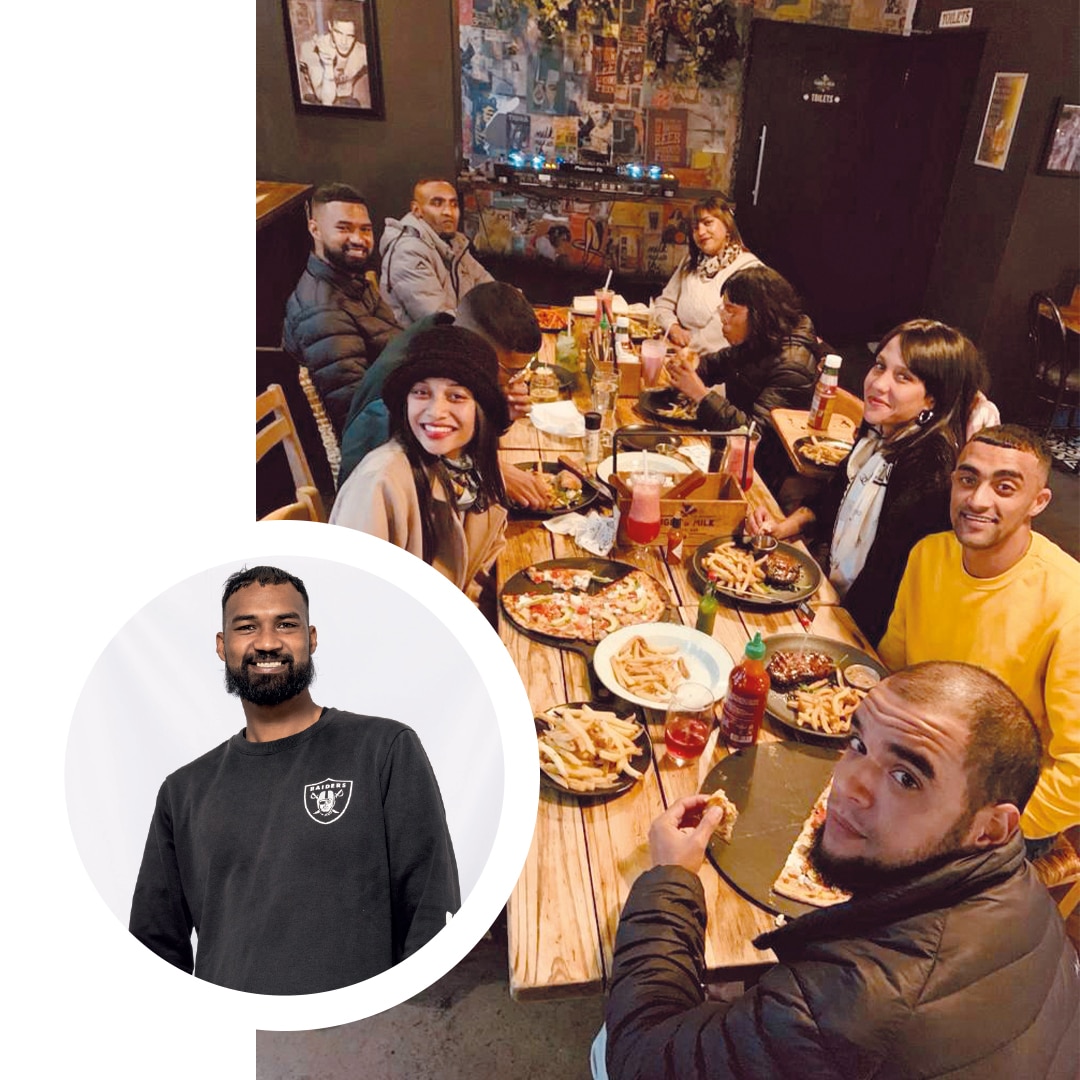
Dylan Appolis
Digital Sports Editor
Dylan, the eldest of three, is from a Christian background but because many of his family members are Muslim, he shares in as much of the tradition as anyone else. “We as a household grew up with both religions being an integral part of our lives, as both my father’s parents were Muslim. My mother’s sister (and her children) also converted to Islam many years ago,”. As a result, Ramadan – even in a Catholic household – is an important time for the entire family. This family dynamic allowed Dylan to spiritually and culturally experience life through a different lens, granting him insight to so much more than he could imagine.
Anyone who knows this sports savvy and intellectual individual knows that his happiest place is to be surrounded by copious amounts of delicious food and plates piled high with all of his favourites. Dylan has fond childhood memories of spending time with his family as they break the fast, or “boeka tyd” as they like to call it. Another fond memory he has from growing up is of his cousins taking plates of their favourite foods over to the neighbours as a sign of goodwill during Iftar.
This barakat plate always excited him, as the tradition is that once you have handed over your plate to your neighbour, then they would return the favour. “It was a really fun time to be walking down the street, and seeing other kids (it was never the adults) from other households also taking part in this tradition. It built a sense of community and filled the atmosphere with love and gratitude, which essentially is what Ramadan is all about,” Dylan says. This is a tradition that he has so much love for to this day, as he feels that in taking part, he has become part of something that is much bigger than himself.

Saadiqah Schroeder
Junior Copy Editor
Saadiqah lives with her mother, father, two sisters and brother-in-law. She remembers the difficulties of starting to fast from a young age, and the resilience she’s built over the years. “My parents have always been incredibly supportive and always there to provide a helping hand or a few words of encouragement to remind me of the purpose for this fast”. Her parents encouraged her to start quite early, and she was a bit nervous to tackle this journey. She explains that when you start at a young age you usually fast for half a day, then as you progress with age, you are then required to fast from sunrise till sunset.
A typical day in Ramadan consists of the following in the Schroeder household: Starting off the day with a nourishing breakfast is vital; what you eat will need to sustain you through the day. She does admit that her family absolutely loves to eat and, generally, all family gatherings and fond memories happen around a table that is piled high with delicious nibbles. There are some mornings where the food from the previous night’s Iftar gets devoured around the breakfast table. Think leftover curry, meaty stew or biryani, which are not typically on the breakfast menu. But during this time, it almost becomes the norm.
Once bellies are filled, and the day has begun, the family members have individual practices to keep them going. “Our family likes to keep to ourselves during this month as it is a time for spiritual awakening and spiritual growth. We, as a family, don’t often invite friends or extended family members over to break the fast (or Boeka as we fondly call it) since we prefer to take the time to make sure that our hearts and minds are prepared and ready to tackle the next day of fasting.”
Saadiqah’s taken the helm from her mother and granny as the queen of dhaltjies, or chilli bites as many know them. However, Saadiah jokes that her mother is still the head chef of their kitchen, laughing as she fondly recalls being shooed out of the kitchen because “we weren’t serious enough”. She reflects on the conflicts that can arise in this time, but humbly reminds herself why she’s fasting. “The most important thing to remember during Ramadan is that you’re doing this for a reason. You’re doing this as a personal spiritual journey, a way to humble yourself, thinking of the less fortunate and showing gratitude for what you have and how lucky you are to be alive.”
Spinach & feta half-moons
Makes 20
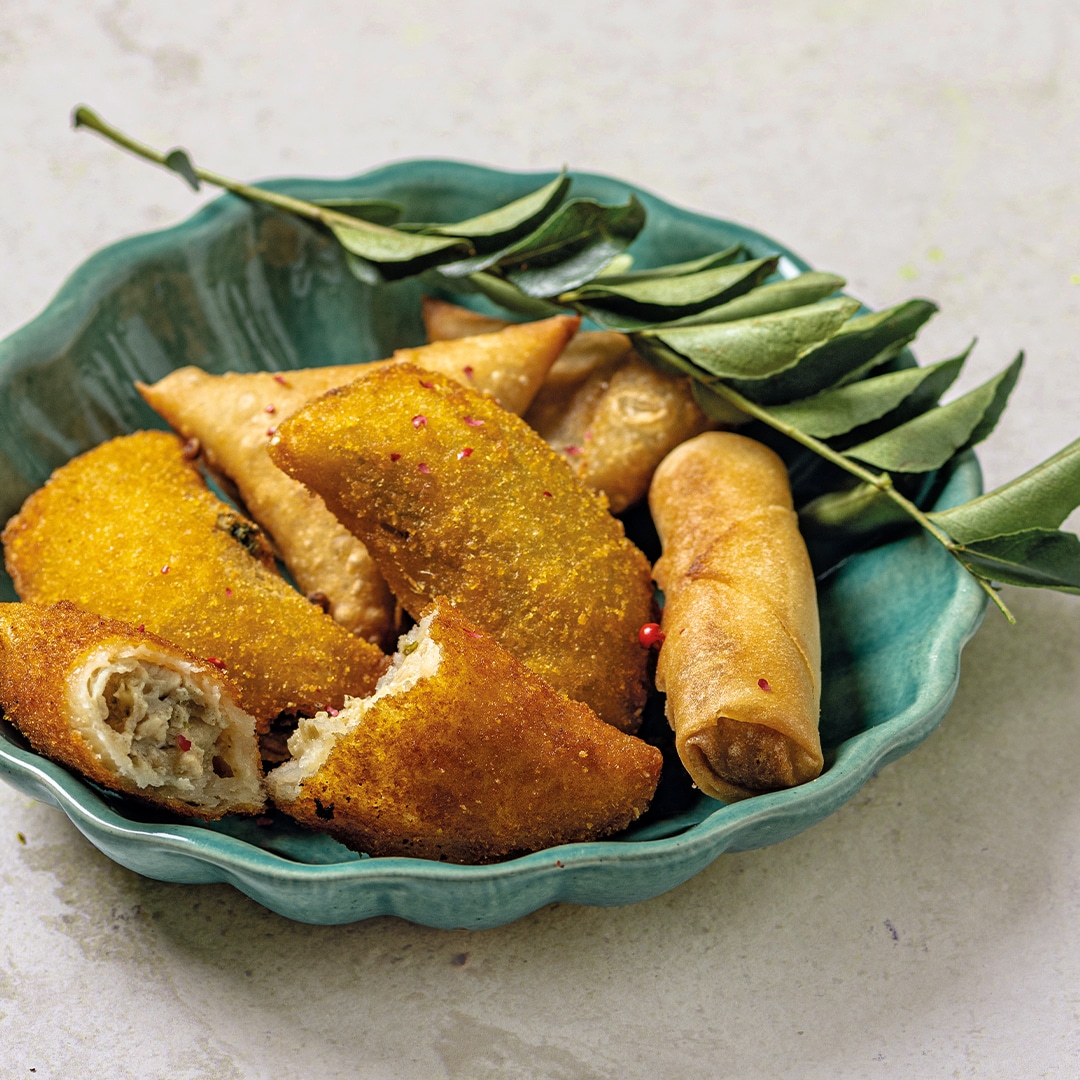
For a meatier version, fill half-moons with the mince samoosa recipe filling
Ingredients
Glug canola oil
1 onion, chopped
2 cloves garlic, chopped
1 packet (300g) Swiss chard or spinach, finely chopped
3 discs feta, crumbled
Pinch of nutmeg
1 tsp chilli flakes
Salt and milled pepper
For the dough
2 cups cake flour
Pinch salt
2 Tbsp melted butter
1 cup warm water
2 eggs, whisked
1 cup breadcrumbs
Canola oil, for deep-frying
Method
- Heat oil in a large pan and fry onion and garlic for 3-5 minutes or until lightly golden.
- Add spinach and wilt in the pan for 2-3 minutes.
- Stir through feta, nutmeg, chilli flakes and season well. Set aside to cool completely.
- For the dough, add the flour, salt and butter into a large bowl.
- Add warm water and stir vigorously until it forms a ball of dough.
- Knead dough for 5-7 minutes until smooth.
- Roll dough out onto a floured surface to about 5mm thick.
- Cut out 20 large discs using a 7cm cookie cutter.
- Place a spoonful of cooled filling in the centre of each pastry disc.
- Brush edges with egg and fold over to enclose. Pinch seams with a fork and repeat with remaining ingredients.
- Dip each half-moon into egg and then breadcrumbs.
- Deep-fry the half-moon in batches in hot oil for about 3-4 minutes or until golden and cooked through. Drain on paper towel. Serve hot
Authentic mince samosa
Makes 20
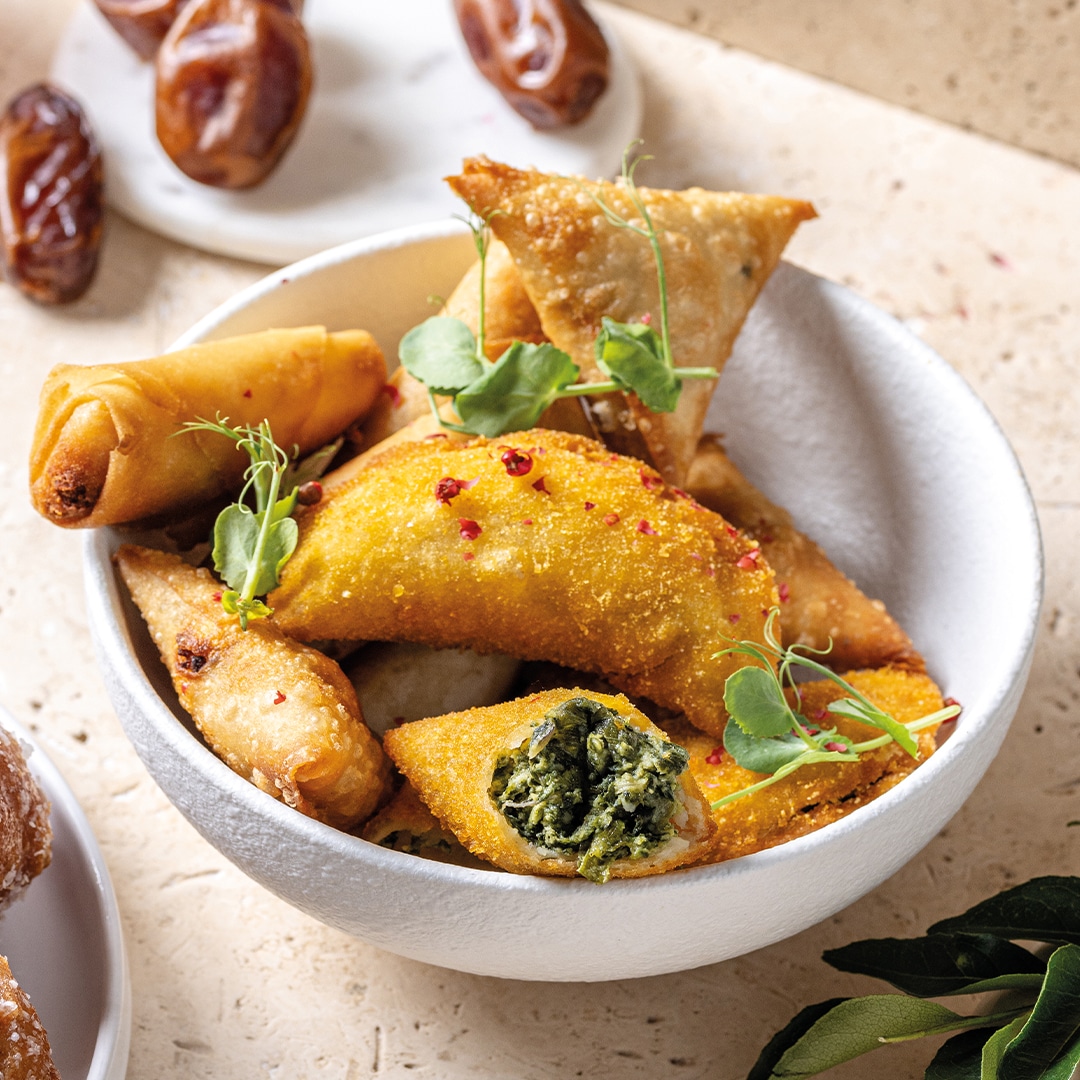
Serve these with your favourite dipping sauce and remember any offcuts can be deep fried and seasoned for a delicious snack fondly known as Paaper bites.
Ingredients
3 onions, chopped
oil, for deep-frying
500g beef mince
1/2 tsp turmeric
1 tsp ground cumin
1 tsp ground coriander
1 tsp leaf masala
1 tsp crushed chilli
1 tsp mother-in-law masala
1 tsp grated garlic
Pinch salt
2 green chillies, deseeded and chopped
1 punnet (20g) fresh coriander
20 samoosa pastry sheets
Method
- Pat onions dry with kitchen paper to remove excess moisture.
- Dry-fry beef mince, turmeric, ground cumin, ground coriander, leaf masala, crushed chillies, mother-in-law masala and fresh garlic in a hot pan for 10-15 minutes or until cooked (add a splash of water if needed). Season well.
- Stir through the green chillies and coriander. Cool completely.
- Fold mince filling into samoosa pastry.
- Deep-fry until golden, drain and serve warm.
Cape Malay koesisters
Makes 32
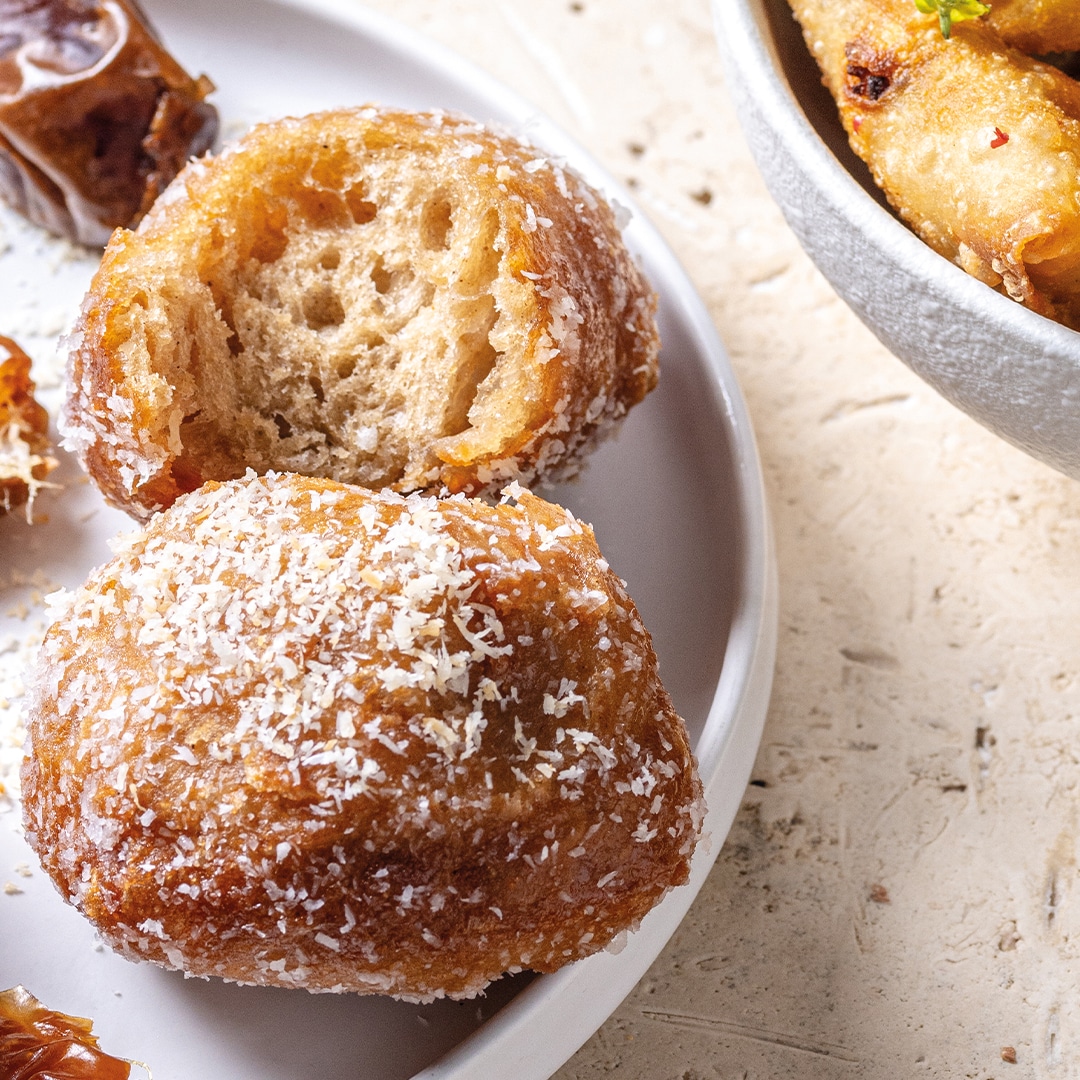
Freeze dough balls after frying. To serve, defrost for 10 minutes and then plunge into boiling syrup.
Ingredients
1 cup (150g) cake flour
1 cup (150g) self-raising flour
Pinch salt
¼ 4 cup (50g) castor sugar
1 tsp (5ml) each ground ginger, cinnamon, mixed spice, cardamom
½ tsp (3ml) aniseed, finely ground
1 packet (10g) instant yeast
⅓ cup (80g) butter
1 cup (250ml) warm milk
4 cups (IL) oil, for frying
Desiccated coconut, for serving
For the syrup
3 cups (600g) sugar
1 ½ cups (375ml) water
2 whole cardamom pods, bruised
2 star anise
2 cinnamon sticks
Peel of 1 orange or lemon
Method
- Combine flours, salt, sugar, spices and yeast.
- Add butter and rub in with fingertips until mixture resembles breadcrumbs.
- Add milk slowly, mixing until combined.
- Knead dough for about 8-10 minutes.
- Place in a lightly oiled bowl and cover with clingfilm pressing down onto dough.
- Rest dough until it has risen and doubled in volume – depending on the temperature, this can take between 1 and 3 hours.
- Once dough has risen, turn out onto a lightly floured surface.
- Divide dough in four and shape into 2cm-thick logs.
- Cut each log into 8cm-long pieces.
- Roll out gently with a rolling pin to form into an oval koesister. Set aside to puff up slightly.
- Fry in batches for 5-7 minutes, or until golden.
- Drain on kitchen paper and cool completely.
- Combine syrup ingredients and simmer until sugar is dissolved.
- Boil for 3-5 minutes.
- Prick koesisters with a fork and add to bubbling hot syrup. Soak for a minute, turning continuously to coat evenly.
- Remove koesisters and let the excess syrup drain.
- Sprinkle with coconut and serve immediately.
Words, Recipes & Styling: Chad January
Photographs: Zhann Solomons, Supplied

